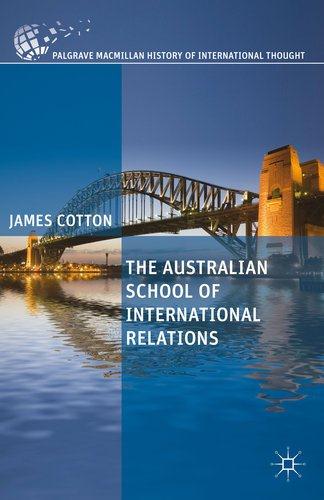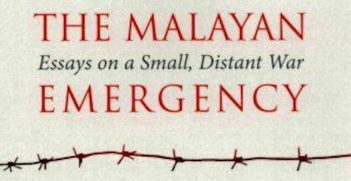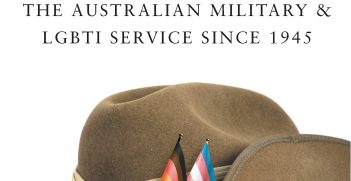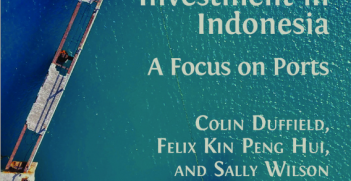The Australian School of International Relations

When did the discipline of international relations make its appearance in Australian universities and who were its most influential early flag-bearers? These are the underlying issues addressed by James Cotton in his meticulously researched investigation of eight outstanding contributors to academic and public affairs. Annoyed by the claims of a few Australian academic writers that the discipline didn’t emerge until the 1960s, Cotton has profiled eight Australian intellectuals, drawn largely from university history, political science or law departments, who pioneered the discipline and involved themselves heavily in public affairs. They were not obscurantist theorists of international relations, as are increasingly found in our university system, but they were all influential in shaping students’ minds, enlightening public opinion in media commentaries, and in advising governments. The eight Australians reviewed by Cotton are deemed to have constituted a ‘school’, not so much because of shared ideological underpinnings or a common framework of foreign policy analysis, but because of the issues to which they accorded priority. The search for a common ‘doctrine’ among them is handled carefully in the book’s final chapter.
Who were the Australian School? These key pioneers of the early I.R. discipline were William Harrison Moore, Frederic Eggleston, A.C.V. Melbourne, H. Duncan Hall, W.K. Hancock, Fred Alexander, W. Macmahon Ball and Walter Crocker. All but one of the eight made their reputations on work undertaken in Australia—mostly around the disciplines of history and law. A majority had been students at Melbourne University but all except Eggleston also attended a British University, three of them at Balliol College, Oxford. Eggleston was probably the most influential member of the School, if only because of the range of his public achievements. A delegate to both the Versailles Peace Conference in 1919 and the San Francisco Conference of 1945, he headed Australia’s first diplomatic mission in China and later headed the legation in Washington. He held Cabinet office in an inter-war Victorian government and later chaired the Commonwealth Grants Commission. But he also found time to write several books including a widely read treatise on Australian foreign policy.
Most of the Australian school were active members of the League of Nations Union between the wars, several were members of the London-based Round Table and all were prominent members of the Australian Institute of International Affairs, established in 1933. All were also beneficiaries of American foundations in their attendance at major international conferences. All but one received senior imperial or Australian honours, four of them knighthoods. But perhaps most significantly, all eight of the Australian School played some part in policy-making or advising government in the course of their careers.
Cotton has pinpointed landmarks in the birth and early recognition of international relations as a field of study in Australia (if not as a discrete undergraduate discipline). Harrison Moore, a law professor at Melbourne, offered a segment of a comparative politics unit entitled ‘International Relations and Law’ as early as 1918 and both Hancock and Alexander had been enrolled in it. In 1935 the words ‘Australian Foreign Policy’ were used in the title of a major publication for the first time but there was no professor of political science until Macmahon Ball’s appointment at Melbourne in 1949. Crocker assumed the foundation chair of international relations at ANU three years later but he lasted there only two years before accepting an invitation from the Menzies government to serve as High Commissioner to India. The chair was left vacant until the arrival of Bruce Miller in 1962.
Was there any doctrinal unity underpinning the Australian School? None of them used the core vocabulary of a later generation to classify their approach to questions of war and peace, notably that sharp dichotomy between idealists and realists. Several of the eight were utopian during the early interwar years in their hopes or expectations about the League but they drifted to what later became the realist school as the clouds of war gathered in the late 1930s. Macmahon Ball had even been a pacifist until 1938.
Several of these eight scholars were most active in the two decades before the Second World War, when the British dominions were testing the limits of their sovereignty in the wake of the 1926 Balfour Report and 1931 Statute of Westminster. They had to grapple with what Cotton describes as “the problematic nature of their Britishness”. To what extent could Australia and the other dominions act independently of Britain in the sphere of foreign affairs? This focus on the emerging Commonwealth was accompanied by a deep concern about the reliability of the League of Nations as a collective security organisation. Several of the Australian School had been delegates to the League or were leading members of the League of Nations Union but their idealism eventually evaporated.
Although most members of the school did not appreciate the growing relevance of Asia in the pre-war years, A.C.V. Melbourne, an economic historian at the University of Queensland, stood out during the mid-1930s as an early advocate of Australian trade and investment links with Asia. In the post-war period, the six remaining active professors from the Australian School seemed to reflect some shared convictions about the growing relevance of Asia and a certain wariness or scepticism about the new formal alliance with Washington. But for a few of them, Hancock, Duncan-Hall and Alexander particularly, the Commonwealth as an international entity continued to engage their attention.
Members of the Australian school wrote and spoke regularly for public audiences and they sought to influence government policy. Even if they were willing to step down from the level of high theory, very few I.R. specialists could afford these days to indulge so freely in public commentary or pressuring government. Perhaps this is a pity.
Professor James Cotton, The Australian School of International Relations, Palgrave Macmillan, 2013.
Reviewed by Professor Peter Boyce, Politics and International Relations Program, University of Tasmania





